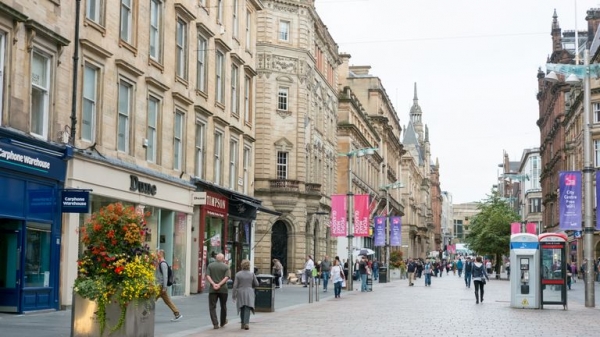Funeral directors and tattoo parlours are thriving – moving high streets away from being “carbon copies” of one another.

New research has shown that independent stores are outperforming major retailers on UK high streets, amid worry for the future of the traditional shopping experience.
Consumer group Which? says that funeral directors, tattoo parlours and hair salons are among those stores which are thriving – moving high streets away from being “carbon copies” of one another and towards a model of personal services and specialists.
The group measured 1.5 million Ordinance Survey records to compare the shape of British high streets between 2014 and 2019, with a focus on businesses that do not feature prominently online, such as those offering personal services.

Ten areas of business have seen an increase in the number of premises on high streets – with six of those being in “eating out and services” category.
The biggest increase since 2014 has been in banqueting and function rooms, which have seen a 114% rise in the amount of premises.
Markets were also big winners on the high street, with 52% more in towns and cities compared with 2014 – one of the few business areas classed as retail in the top 10 best performing sectors.
Tattoo parlours and piercing services have seen their presence increase by 44%, while the number of cafes, snack bars and tea rooms went up by 35%. Hair and beauty services have increased by 31% in the last five years.
However, it is not all good news, with some businesses seeing huge decreases in their presence in towns and cities.
Listen to “Any Other Business” on Spreaker.
:: Listen to the Any Other Business podcast on Apple Podcasts, Google Podcasts, Spotify, Spreaker
The hardest-hit sector has been book and map sellers, who are battling the internet shopping behemoth Amazon to survive, with a huge 70% drop in stores on high streets since 2014.
There are 56% fewer computer shops, a drop of 44% in second-hand shops, and a 41% decline in the number of art and antique stores.
The South East coastal towns of Eastbourne and Hastings lost the largest number of stores on its high streets, with drops of 18% and 15% respectively, but saw increases in “personal service” stores of 41%.
In terms of retail outlets, Torbay in Devon and Islington in north London saw a 20% decrease in the number of outlets over the five-year period, but both areas also saw increases of personal services on their high streets by about a quarter.

To keep up with the changing shape of the high street, department stores and fashion chains have begun offering salon services and coffee shops to try and entice shoppers inside.
Which? Magazine editor Harry Rose said: “While it’s concerning to have seen so many well-loved brands disappear from UK high streets in recent years, our research suggests the future of our town centres isn’t necessarily as bleak as the reports of store closures would have you believe.
“As shoppers needs and habits evolve, it’s vital that businesses keep up with these changing trends and consider how they can grow with them, in order to continue thriving on the high street.”
The statistics come as another major high street chain, Bonmarche, was placed into administration on Friday.
Next article
Bonmarche collapses into administration as thousands of jobs at risk
